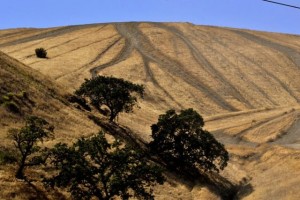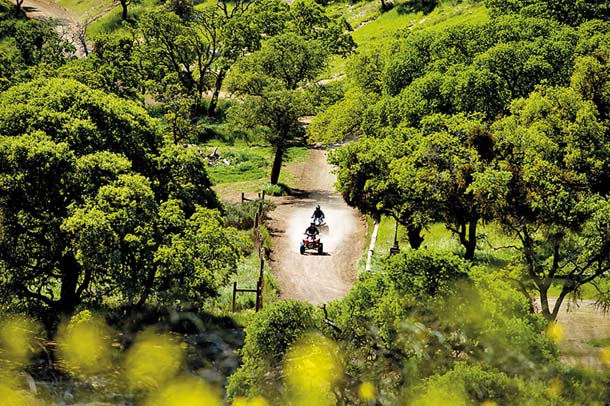In the 1850s, ranchers corralled wild horses in a long, rocky canyon southeast of Livermore. Aptly named Corral Hollow, this valley—covered in the October 2001 issue of Bay Nature—is the center of a controversy between off-road vehicle enthusiasts backed by the state and a growing coalition of environmental groups who consider the historical valley an ecological treasure. Home to rare plant communities of desert olive scrub, juniper-oak woodland, one-sided bluegrass, and purple needlegrass (now the official state grass), the canyon is a transition area that marks the northernmost range of many amphibians and reptiles, including blackheaded snakes and spadefoot toads.
Now a state park proposal would expand the 1,500-acre Carnegie State Vehicular Recreation Area to include 3,000 acres of the Corral Hollow valley, land purchased by the state in 1998 to increase the area open to motorcycles, all-terrain vehicles, and sports utility vehicles.
The state parks’ Off Highway Vehicle Division hopes to present a draft Environmental Impact Report for public comment by spring, says Jennifer Buckingham, state parks resource ecologist. A 40- to 65-day public review period will follow.
Environmental groups, including the Sierra Club, Center for Biological Diversity, Bay Area Open Space Council, and the California Native Plant Society,have objected to the proposed expansion of the off-road vehicle park.Jeff Miller of the Center for Biological Diversity says federallylisted species including the California red-legged frog, Alamedawhipsnake, and California tiger salamander are “getting crushed outthere.” Miller says this is a violation of federal law since the statevehicle recreation area does not have a Habitat Conservation Plan(hcp), which would allow the “taking” of protected species in exchangefor a conservation mitigation package.
State parks district superintendent Dana Jones says that her division iscurrently working on the HCP but maintains that “we have not documentedany takes of endangered species” in the existing park. Both Jones andBuckingham say wildlife surveys suggest that listed animals are doingwell there. “They are doing better on the property we are riding onthan on the adjacent property,” says Jones.
But local resident Celeste Garamendi is not reassured. “There is no way [the off-road vehicles] are not having impacts,” she says. “The Corral Hollow creek bank has been regraded over and denuded of all native vegetation.” Garamendi and the environmental groups have requested that the new acreage be preserved to serve as mitigation for damage at the current site.
To join the effort to protect Corral Hollow, contact the California Native Plant Society (www.ebcnps.org) or Sierra Club (www.sanfranciscobay.sierraclub.org). To find out more about the current Carnegie vehicle park, visit www.parks.ca.gov.



-300x69.jpg)